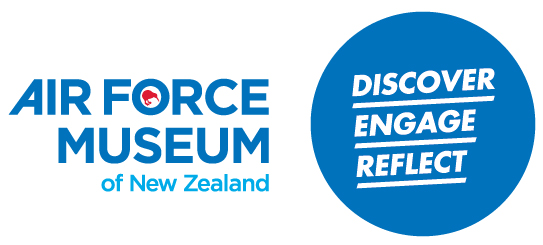Online Exhibition
Wāhine Toa: Women in Defence
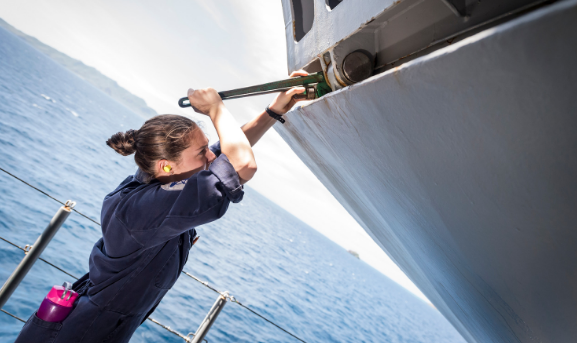


Welcome to Wāhine Toa: Women in Defence, an online exhibition exploring the journeys of women serving in the New Zealand Defence Force (NZDF) since gender integration.
The NZDF became an integrated force in July 1977, when women were accepted into the Army, Navy and Air Force alongside men. However, some restrictions remained in place until 2007 that effectively kept women from some trades (especially combat-related) and training opportunities.
As we remember and celebrate the women who came before us and acknowledge the changes in our military since 1977, we also take the opportunity to look to the future. What changes have women experienced since gender integration? How far have we come and what challenges remain?
You will hear from women at different levels and at various stages in their service careers. Together, they share their experiences as women in the New Zealand military, and their perspectives on diversity and inclusion today.
Wāhine Toa / Warrior Women
Royal New Zealand Navy | Te Taua Moana o Aotearoa
“Maybe it’s not just about females anymore. Maybe it’s more about finding work-life balance across the board because I think we’ve lost some of that.”
Warrant Officer Lynette Bokany, RNZN
“There’s no reason why women couldn’t go to war. They face just as many challenges as men do these days.”
Chief Petty Officer Korin O’Brien, RNZN
“It’s nice to be that person to show others there’s no disadvantage to being female. We’re all just people at the end of the day.”
Able Seaman Combat Specialist Janneke Olthuis, RNZN
“I think it’s important we’ve got the diversity conversation and different viewpoints represented at the top table.”
Commander Lisa Hunn, RNZN
“‘Women don’t speak up. We have to lean in.’ Well maybe the organisation should stop and listen. Listen to the quieter people. It doesn’t mean they’re any less a leader.”
Captain Maxine Lawes
Three of our up and coming leaders talk about who inspires them and what they think about gender in the New Zealand Defence Force.
Basic Branch Trainees, RNZN
New Zealand Army | Ngati Tumatauenga
“When you are on the battlefield, there is no delineation between male and female. You are either doing the job or not doing the job and if you’ve got to run as fast and perform the same, you have to.”
Sergeant Georgina Shanks
“When they announced the full gender integration, I’m not sure if there was any big reaction; it was more ‘it’s about time’ and ‘why don’t we do this?’ There will always be sceptics about things but in general I think it was a really positive move.”
Colonel Helen Cooper
“Diversity in this organisation leads to operational success.”
Captain Catherine Dymock
“I wanted to do something that was challenging for me and something where I could express myself as a Maori woman.”
Private Hana Wainohu
Royal New Zealand Air Force | Te Tauaarangi o Aotearoa
“I didn’t feel any different from a male trainee, I felt exactly the same.”
Pilot Officer Georgie Cresswell, RNZAF
“I joined the Air Force in 1988 … the major changes that I noticed for women in the Defence Force as a whole was the opening up of the trades and branches that you could go into.”
Flight Sergeant Jacqueline Doolan-Tindall (retired), RNZAF
“We’ve come such a long way, and it’s exciting to see where we’re going next. Because we still haven’t finished. There’s still work to be done. And I’m happy to be part of it.”
Squadron Leader Barbie Attwood, RNZAF
The story so far…
Despite being a male-dominated organisation, historically, the military has been a means for New Zealand women to gain employment and training opportunities otherwise unavailable to them.
Discover how the New Zealand armed forces recruited women, the trades they could join and the significant policies and initiatives that have been made between 1977-2018.
Recruiting More Military Women
Recruitment materials are held in the collections of the National Army Museum Te Mata Toa, Torpedo Bay Navy Museum and Air Force Museum of New Zealand. Browse through this selection to see how military recruiting for women has evolved since World War Two.
WREN ON COMMODORE’S BARGE
During World War Two, thousands of New Zealand women served in female-only Auxiliary Services, in support of the three armed services. Publicity films and photographs, like this 1943 portrait of a Women’s Royal New Zealand Naval Service (WRNZS) Wren on Commodore’s Barge, were used to encourage women to enlist in these services.

RECRUITING FOR THE ROYAL NEW ZEALAND NURSING CORPS (RNZNC) AND THE NEW ZEALAND WOMEN’S ROYAL ARMY CORPS (NZWRAC).
At the end of the war, the majority of women were demobilised and by 1947, only 561 remained in military service. However the separate women’s services were retained and over the following years were also renamed. This pre-1977 brochure was used to recruit new Officers to the Royal New Zealand Nursing Corps (RNZNC) and the New Zealand Women’s Royal Army Corps (NZWRAC).

RECRUITING FOR THE NEW ZEALAND WOMEN’S ROYAL ARMY CORPS
This pre-integration recruitment brochure was used to recruit women for the New Zealand Women’s Royal Army Corps (NZWRAC).

“BE REALLY SMART FOR THE NEXT 3 YEARS!”
Prior to gender integration in 1977, women served in the Women’s Royal New Zealand Air Force (WRNZAF). This girly pink recruiting pamphlet produced for the WRNZAF in 1963 tells the viewer that by joining the Air Force they will be “REALLY smart for the next 3 years!” The dates reflect the length of initial engagements in the WRNZAF. At the time, applicants needed to be single or, if widowed or legally separated, without dependent children.

The colour for you is Air Force Blue
This 1971 recruiting brochure for the WRNZAF depicts a smiling member of the WRNZAF against a more familiar “Air Force blue” background. Six years later, the WRNZAF would be disbanded and its members absorbed into the Royal New Zealand Air Force (RNZAF). This change occurred simultaneously across the Air Force, Navy and Army.
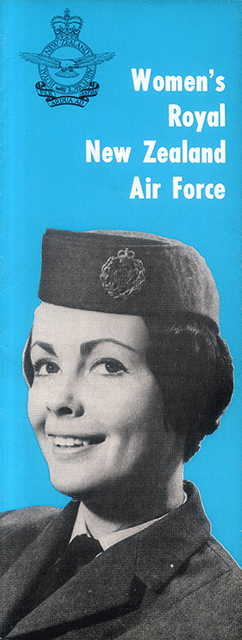
Royal New Zealand Corps of Signals
Although the three services integrated in 1977, the policy did contain restrictions that effectively kept women from some trades and training opportunities. This page from a post-integration recruitment brochure shows a female soldier wearing the badge of the Royal New Zealand Corps of Signals.
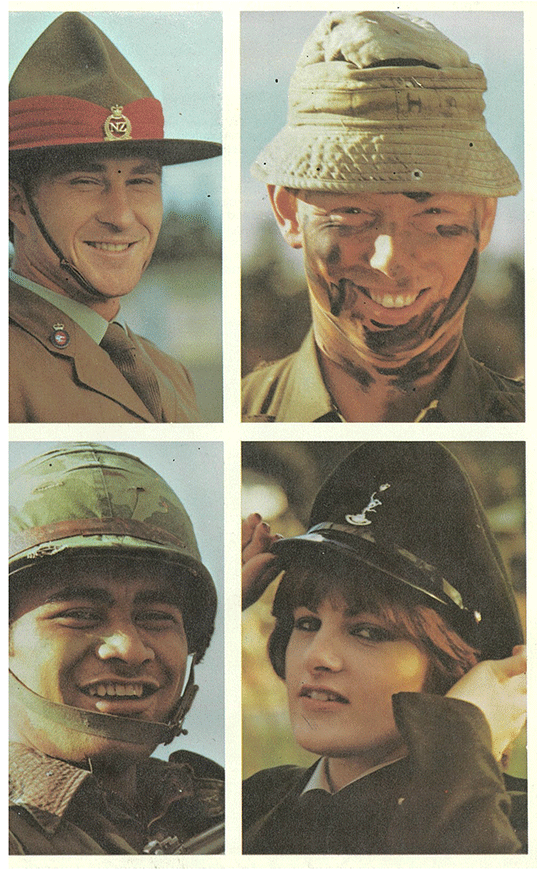
Navy recruitment in the late 1970s
Posters were commonly used for recruiting and still are today. This Navy recruitment poster from the late 1970s includes a female steward setting the table in the Officers’ Mess.
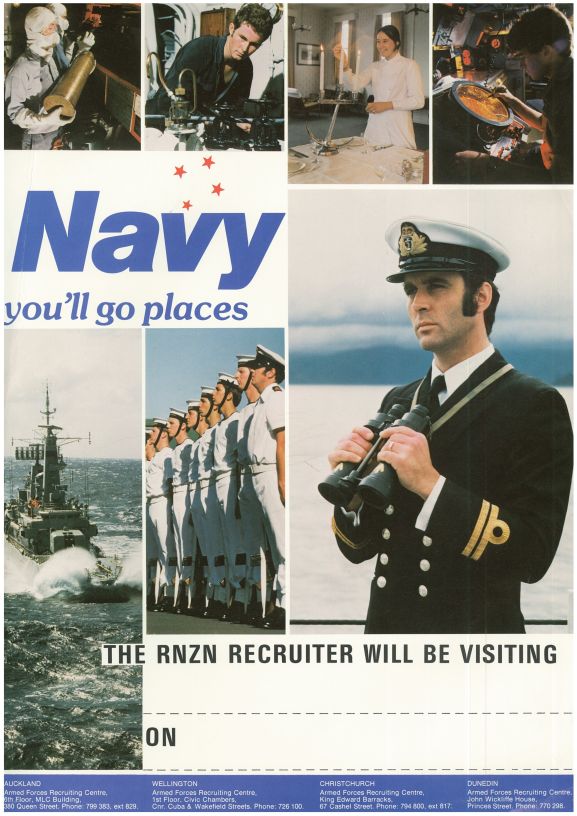
Recruiting in the 1980s
Pages from a 1980s Army recruitment brochure. Note the reference to Section 16(2) of the Human Rights Commission Act of 1977 which at the time allowed the New Zealand Army to place restrictions on how far female soldiers could progress in certain corps.
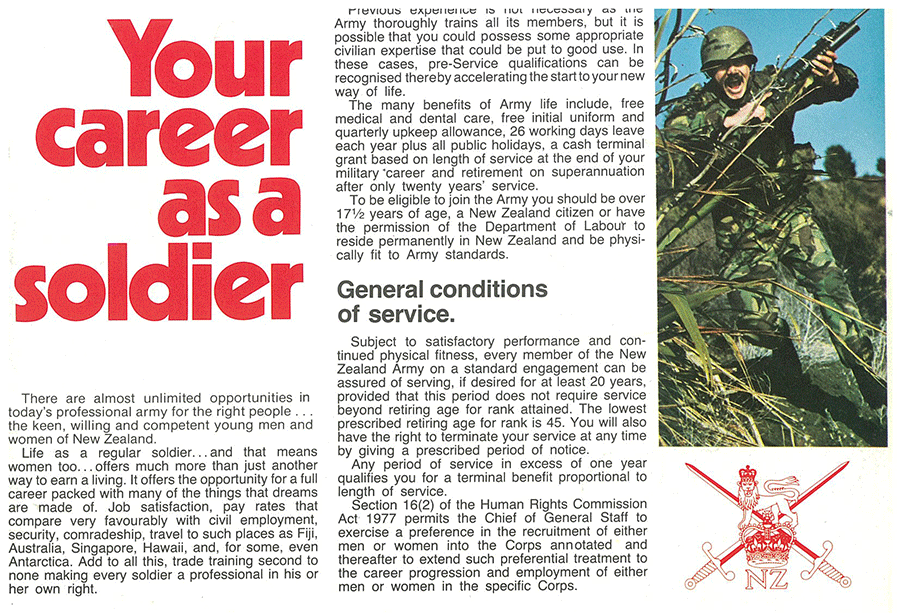
The Royal Regiment of New Zealand Artillery
The Royal Regiment of New Zealand Artillery was one of the New Zealand Army corps which placed restrictions on how far its female soldiers could progress. Restrictions on combat duty also affected promotion prospects for women serving in the Air Force and Navy.

Integrated RNZAF support trades
This 1980s recruiting pamphlet [part only] appealed to both men and women to join the integrated RNZAF support trades. It depicts both male and female personnel working in Air Force support trades such as telecommunication, stores accounts and administration.
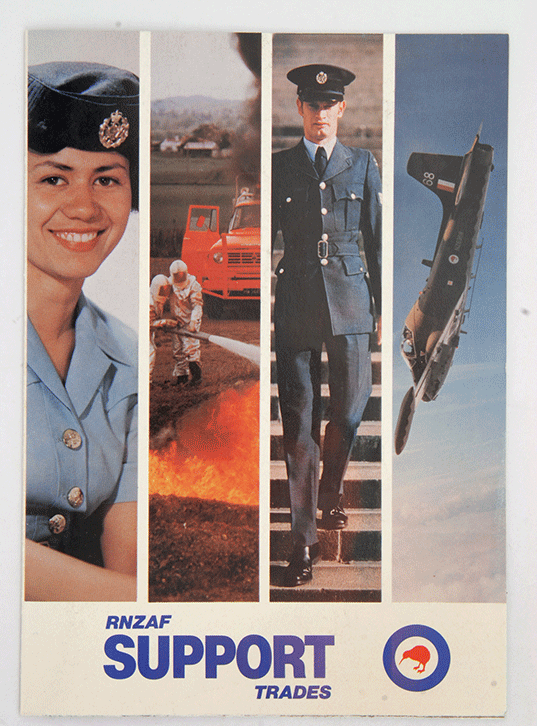
Arm me with a career
Image from the New Zealand Army 1995 “Arm Me with a Future” recruiting campaign which appeared in both print and on the television.
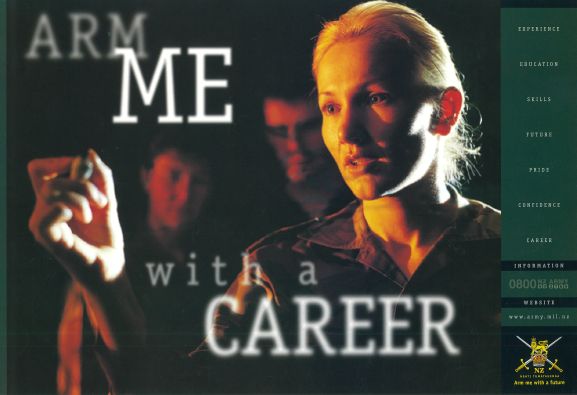
“Dedication Doesn’t Discriminate”
This A2-sized RNZAF poster from the 2000’s emphasises that “Dedication Doesn’t Discriminate”. It features Flight Lieutenant Angela Swann-Cronin (née Swann), who made history in 1997 as the first Māori woman (Ngāti Porou and Rongowhakaata) to qualify as a pilot with the RNZAF.
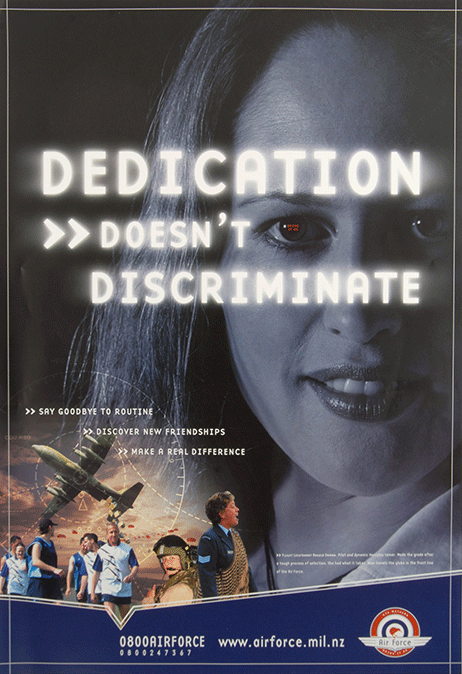
Military engineering
Fastforward to 2015, and this Tri-Service recruiting pamphlet features a female naval engineer on the cover. It describes the various kinds of military engineers, including the two different engineering roles in the Navy: Weapon Engineer Officer (WEO) and Marine Engineer Officer (MEO).
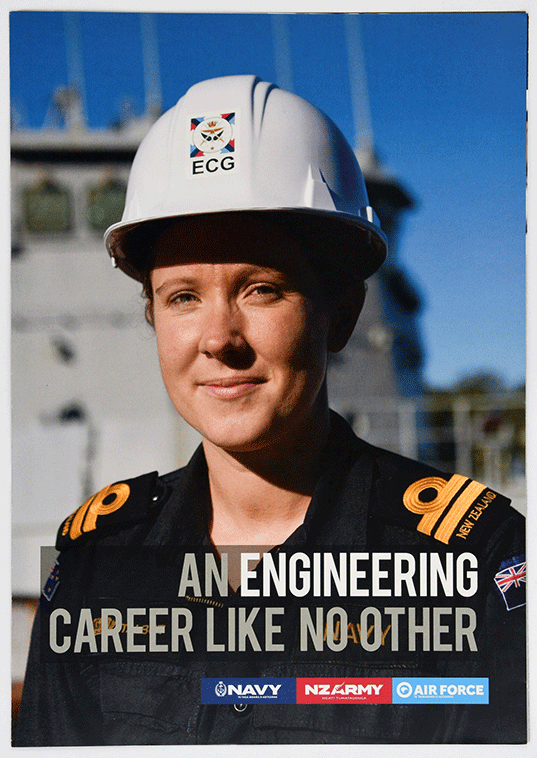
Medical Officers
This 2015 Tri-Service recruiting pamphlet describes the multiple medical roles across the three Services. All three Services employ Medical Officers (Doctors) and Medics, with the Army and Air Force also employing Environmental Health Officers. In addition to these roles, the Army also employs Medical Officer Cadets, Nursing Officers, Dental Officers, Dental Assistants, Dental Hygienists and Pharmacists.
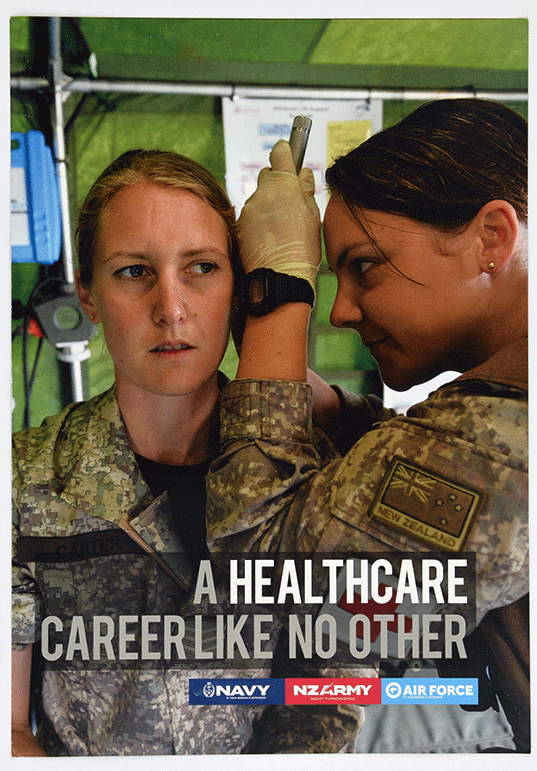
Women in the NZDF
This 2018 recruiting pamphlet is aimed specifically at women seeking a career in the New Zealand Defence Force. The cover images depict three young women serving in the Navy, Army and Air Force.
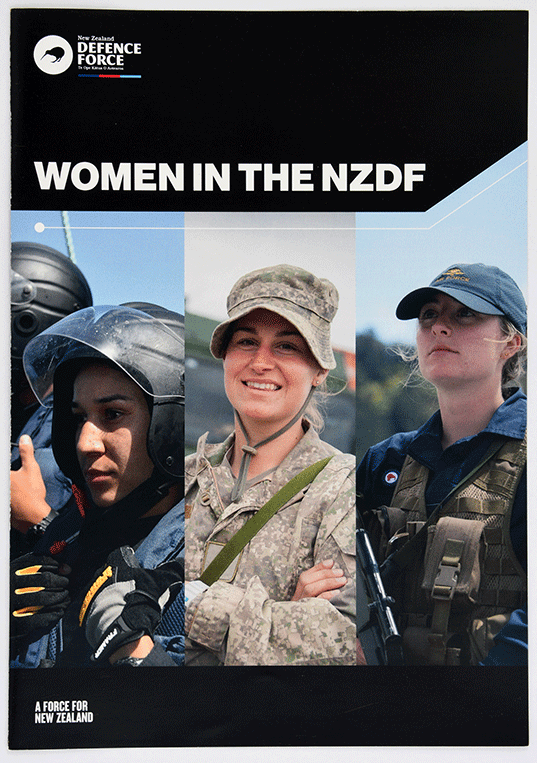
New Zealand Defence Force Policy and initiatives (1977-2018)
This timeline charts the major policy changes for gender equality and related initiatives since gender integration in 1977, through until today.
1977
Human Rights Commission Act outlaws discrimination on grounds of sex, marital status and religious belief.
Defence Force policy integrates the separate women’s services into the mainstream forces, including equal pay and maternity provisions (women remain excluded from combat trades and roles by Defence Council policy). 1977 marks the first time women complete the same officer training as men at the Officer Cadet Training Unit, NZ Army.
1979
UN General Assembly adopts Convention on the Elimination of All Forms of Discrimination against Women (CEDAW).
First intake of integrated Basic Common Trainees in the Navy – 18 women, 51 men.
1980
Maternity Leave and Employment Protection Act allows up to 26 weeks unpaid leave after the birth of a child and prevents dismissal on grounds of pregnancy.
1981
A paper published on the employment of Women at Sea in non-combatant ships, concludes that Navy policy should permit women to serve in survey and research ships.
1982
Women participate for the first time in Front-line Battle Tactics Training overseas. Twelve women participate on an equal footing with over 100 of their male colleagues in Exercise Tropic Reef in Fiji.
1985
Ministry of Women’s Affairs established.
1986
The Government decision is made to open all non-combat flying roles to women.
The first woman to do Shore Patrol duties in the Navy is Able Writer Vicki Ryan.
The first female soldiers, along with 15 of their male colleagues, made a military parachute descent into the Waitemata Harbour.
Authorisation of Women at Sea Pilot Study leads to Women at Sea Trial in December on HMNZS Monowai.
1987
Women are accepted for pilot training in the Air Force.
Maternity Leave and Employment Protection Act (1980) allows fathers to take unpaid leave after the birth of a child.
1988
Women are allowed to fly combat aircraft and train for combat (but not serve in combat situations) – women now eligible to do any job within the Air Force.
1989
Navy Order 35/1989 authorises the permanent employment of women at sea. From January 1989, all female entrants required to serve at sea (except in certain shore-only trades).
1991
Women are approved to enter Engineering branches of the Navy.
The commencement of the first six-month course at the Regular Force Cadet School at Waiouru allowing the integration of sixteen-year-old females with males of the same age group. By the time of the next course in July 1991, 19 of 87 Officer Cadets are female.
1992
Women are approved to enter the Seaman and Technical branches of the Naval Reserve.
NZ Army commences a trial period of integration of female soldiers in frontline combat positions.
1993
Navy is the first NZDF service to open combat roles to women, who may serve on all naval vessels, combat and non-combat.
All RNZN branches, except Diving Sub Branch, are opened to women and two of four frigates declared available for mixed gender crews.
1995
HMNZS Wellington is first RNZN frigate to take women into a combat zone (Arabian Gulf) as part of the Multi-national Interception Force.
Review of good working relationships in the Defence Force reports on the existence of sexual and racial harassment across the Force and on the implementation of policy and procedures to deal with the issue.
1996
The final two frigates are declared available for full mixed-gender ships’ companies.
1997
Defence Force issues policy on equal employment opportunities and the prevention of harassment and discrimination; a cornerstone for the Force’s way of working today.
Publicity of verbal and physical abuse complaints by Larissa Turner, a former naval gunner, sparks Defence Force audit of gender integration across services. Harassment found to be widespread.
1999
Chief of Defence Force AM Carey Adamson announces the NZDF would no longer use the Human Rights Act to prevent women from going into combat.
2000
Restrictions on women serving in combat abolished across NZDF (Defence Force Order 05/2000).
Diving sub-branch in the Navy is opened to women.
Over 50 women deploy with New Zealand’s Third Battalion to work as part of the United Nations Transition Administration Operation in East Timor. For the first time women are deployed on operations in combat roles.
2001
Parental Leave and Employment Protection Amendment Act introduces paid parental leave.
2007
Government passes legislation for women’s full participation in front-line combat roles – this law change reflects the Defence Force Order 05/2000 introduced in 2000.
2013
Women’s Development Steering Group established.
2016
The Directorate Diversity & Inclusion is formed November 2016.
Operation Respect launched, a comprehensive strategy to target and challenge sexism and to better integrate women into the NZDF
2017
In 2017 the Female Engagement Team launches at the New Zealand Special Air Services Regiment who are tasked with developing the capability for employment within the wider NZDF.
The RNZAF’s first School to Skies programme is held 9-13 July 2017.
2018
Diversity Works NZ awards the New Zealand Defence Force, Supreme Winner and Emerging Diversity and Inclusion Award
Proud to be a part of the Suffrage 125 national event programme.
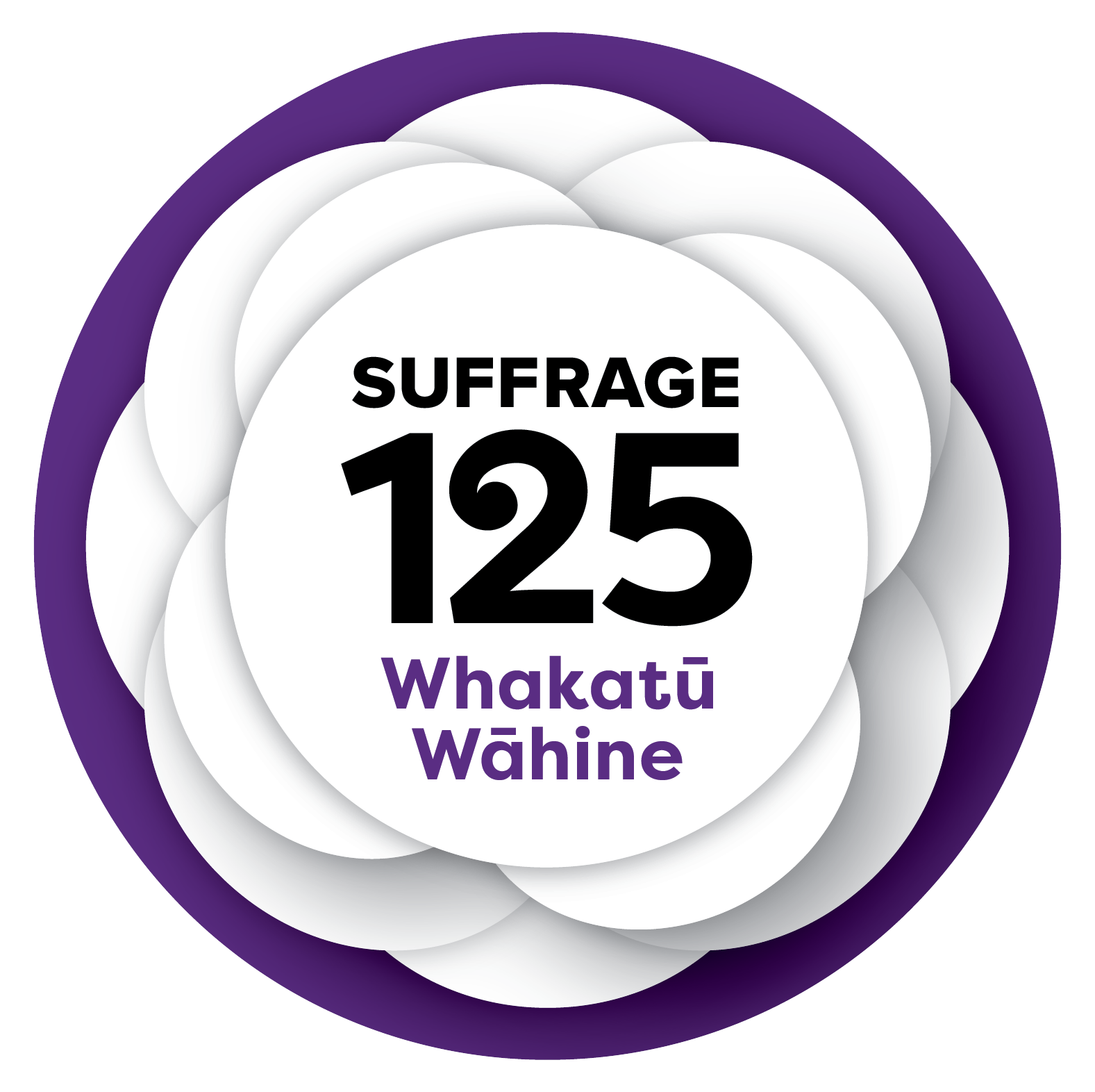
Wāhine Toa: Women in Defence is a collaboration between New Zealand’s national service museums, who came together to create this online exhibition exploring the journeys of women in the New Zealand Defence Force, past, present and future.
In memory of Thérèse Angelo (1962-2018), long-serving and much-loved Director of the Air Force Museum of New Zealand – our wāhine toa who brought this project together and whose leadership we admired.







